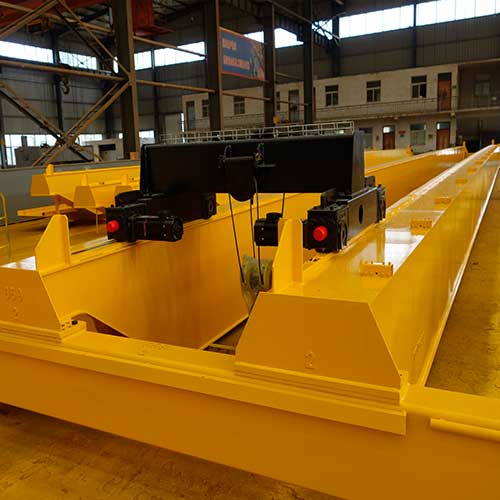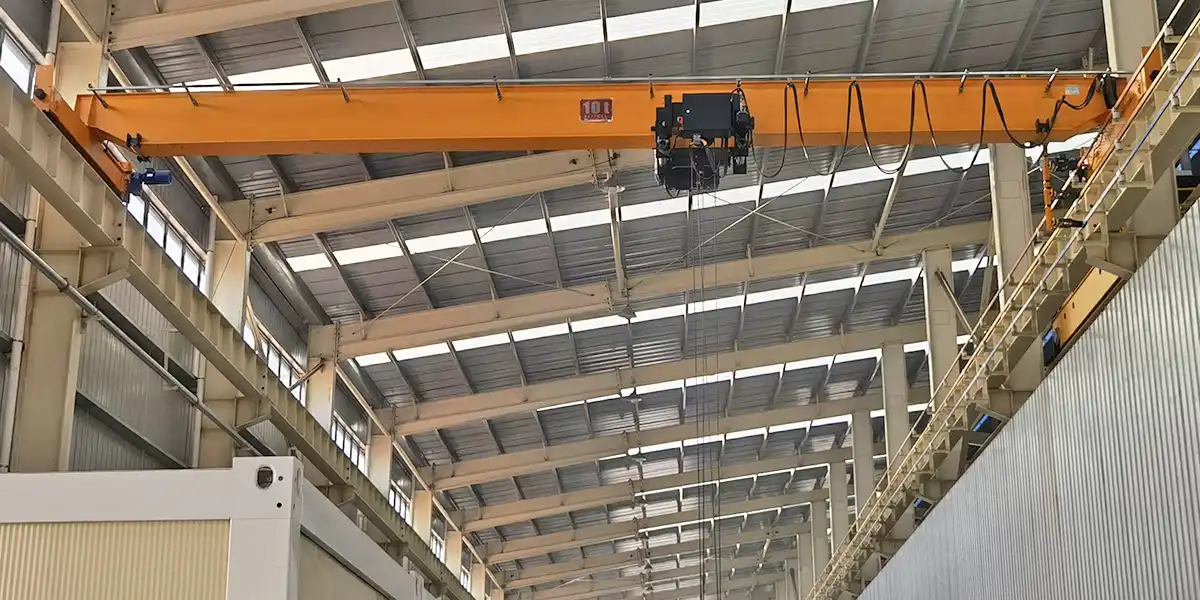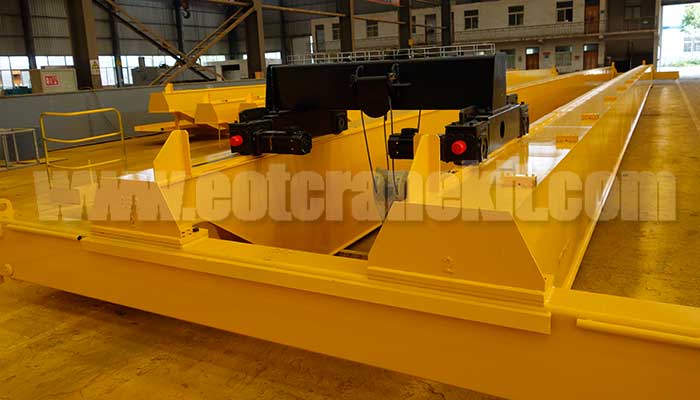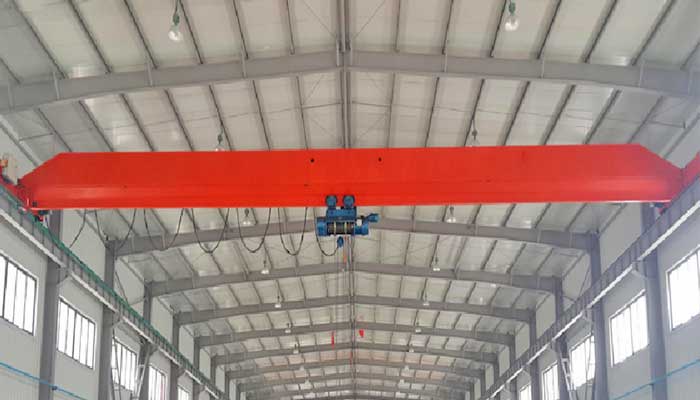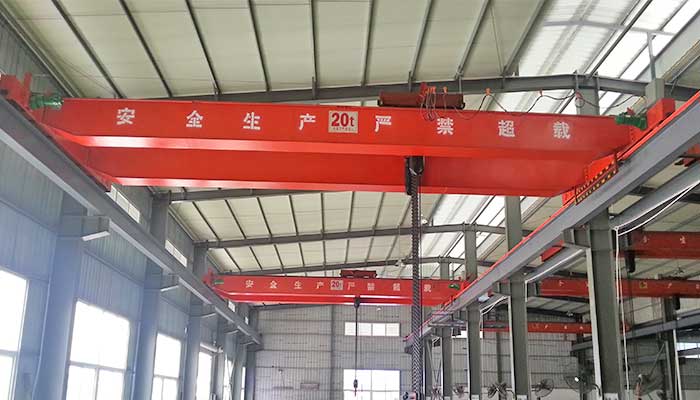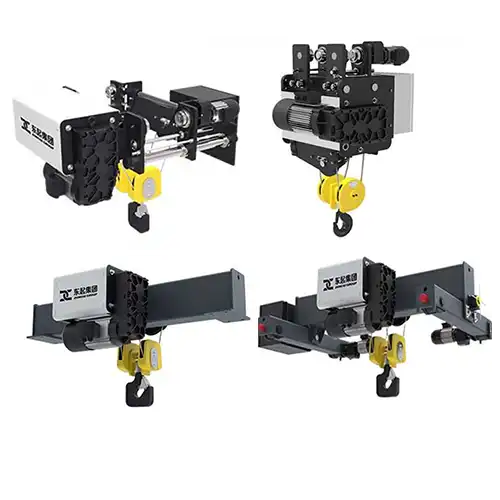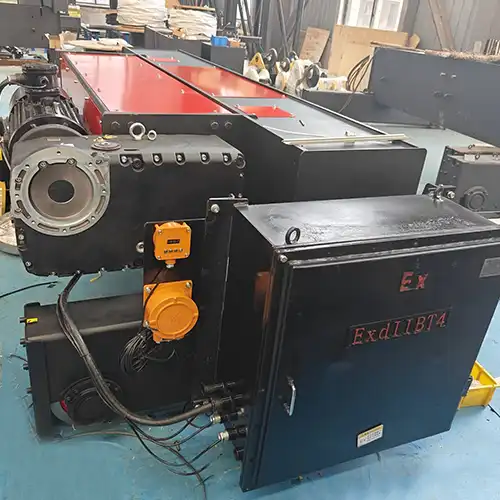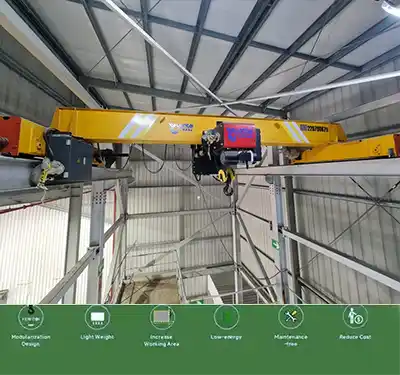European vs. Traditional Top Running Overhead Cranes: Key Advantages
European style top running overhead cranes offer better space utilization, higher efficiency, advanced safety features, and reduced maintenance costs.
Category: Top Running Crane
Your Trusted Top Running Overhead Crane Manufacturer & Supplier
Advantages of European Style Top Running Overhead Cranes vs. Traditional Top Running Cranes
Top running overhead cranes are essential in various industrial settings, and choosing the right type can impact efficiency, safety, and cost. European style cranes, known for their modern design and advanced features, are often compared with traditional top running cranes, which have been in use for decades. While traditional cranes have proven reliability, European style cranes incorporate the latest technology and design improvements.
Design and Structure
European Style Top Running Cranes
Lightweight Construction: European style top running cranes are engineered with H-shaped steel for their main girders. This material choice results in a lighter structure compared to traditional cranes. The reduced weight of European style cranes minimizes the strain on building supports, leading to improved efficiency and maneuverability. This design allows for easier handling and operation, particularly in environments where space and load considerations are critical.
Aesthetic Appeal: European style cranes are distinguished by their modern, sleek design. The aesthetic appeal of these cranes is not just about looks; it also contributes to better space utilization within facilities. The streamlined design reflects advanced engineering principles, which enhance both the crane's functionality and its visual integration into contemporary industrial settings.
Modular Design: A standout feature of European style top running cranes is their modular construction. This design approach provides significant flexibility and customization options, making it easier to adapt the crane to various operational needs and spatial constraints. The modular components facilitate straightforward maintenance and upgrades, ensuring the crane remains adaptable and efficient as requirements evolve. This flexibility is particularly valuable for facilities that need to adjust their operations over time.
Types of European Style Top Running Cranes:
- Single Girder Top Running Cranes: These cranes use a single girder for support and are known for their lighter weight and efficiency, making them suitable for a range of applications where space and load capacity are considered.
- Double Girder Top Running Cranes: Featuring two parallel girders, these cranes offer increased strength and load capacity while maintaining a relatively lightweight structure compared to traditional designs.
- Compact Cranes: Designed for optimal space usage, these cranes are particularly suited for facilities with limited headroom or tight operational areas.
- Modular Cranes: These cranes are highly customizable, allowing for easy adaptation to specific operational requirements and future upgrades.
European style top running cranes provide a modern, efficient, and adaptable solution for material handling needs, offering advantages in both design and functionality over traditional models.
Traditional Top Running Cranes
Heavyweight Construction: Traditional top running cranes often feature welded box-type structures. This type of construction results in a heavier and more cumbersome crane. The increased weight can place additional stress on the building's infrastructure, potentially leading to higher installation and support costs. These cranes may require additional reinforcement to support their weight, which can affect overall operational efficiency.
Bulkier Design: Traditional top running cranes are known for their robust but bulkier design. This design tends to be less streamlined, resulting in less efficient use of facility space. The bulkiness can also impact the crane's maneuverability, making it more challenging to operate in tight or constrained environments. While traditional cranes are durable and built to withstand harsh conditions, their design does not offer the same modern aesthetics or space optimization as European style cranes.
Types of Traditional Top Running Cranes:
- Box Girder Top Running Cranes: Featuring a welded box girder construction, these cranes are known for their durability but are heavier and require more space.
- Single Girder Top Running Cranes: Typically using a single, robust girder, these cranes are simpler and less expensive but may lack the load capacity and efficiency of more modern designs.
- Double Girder Top Running Cranes: These cranes use two parallel girders, providing increased strength and load capacity but at the cost of added weight and complexity.
These types of traditional top running cranes, while effective and reliable, may not offer the same level of space efficiency, modern design, or operational flexibility as their European counterparts.
Performance and Efficiency
European Style Top Running Cranes
- Higher Lifting Speeds: European style top running cranes are engineered for superior performance with faster hoist and trolley travel speeds. This increased speed enhances productivity by allowing quicker lifting and movement of materials. The advanced design ensures that these cranes can handle high-speed operations efficiently without compromising safety or stability.
- Energy Efficiency: These cranes are equipped with modern, high-efficiency motors and advanced drive systems that reduce overall energy consumption. European style cranes utilize technologies such as frequency converters and energy-saving motors, which help minimize power usage and operational costs. This efficiency not only benefits the environment but also reduces the total cost of ownership.
- Precision Control: European style cranes feature advanced control systems that provide exceptional precision in positioning. The integration of sophisticated control technologies, including programmable logic controllers (PLCs) and variable frequency drives (VFDs), allows for smooth, accurate movements. This precision is crucial for tasks requiring exact positioning, such as assembly and handling of sensitive materials.
Traditional Top Running Cranes
- Lower Speeds: Traditional top running cranes typically have slower hoist and trolley travel speeds. These cranes are designed for robust performance but may not match the high-speed capabilities of modern European models. The slower speeds can impact overall productivity, especially in environments where rapid material handling is essential.
- Higher Energy Consumption: Traditional cranes often use older motor technologies that are less energy-efficient. This can lead to higher power consumption and increased operational costs. The less advanced drive systems in traditional cranes may not incorporate modern energy-saving features, resulting in greater energy usage over time.
- Basic Control Systems: The control systems in traditional top running cranes are generally simpler and less sophisticated compared to European models. Standard mechanisms may lack the advanced features needed for precise positioning and smooth operation. As a result, these cranes might offer less accuracy and control, which can be a limitation in applications requiring high precision.
Safety and Protection Features
European Style Top Running Cranes
- Advanced Safety Features: European style cranes are equipped with cutting-edge safety features designed to protect both the equipment and personnel. These cranes include integrated protection systems that guard against overload conditions, short circuits, and phase sequence issues. The advanced safety mechanisms ensure that the crane operates within safe parameters, reducing the risk of equipment failure and accidents.
- Automatic Safety Systems: These cranes are designed with sophisticated automatic safety systems that provide real-time monitoring and prompt responses to potential hazards. For example, overload sensors trigger alarms or shutdowns if the crane exceeds safe operating limits. Automatic emergency responses, such as power cutoffs and brake activations, help to mitigate risks and ensure safe operation under various conditions.
- Enhanced Protection: European style cranes boast high protection class ratings, such as IP54 or IP55, which indicate strong resistance to dust and water ingress. This high level of protection enhances the crane's durability and reliability, making it suitable for use in a wide range of environments, including those with challenging conditions such as high humidity or dust exposure.
Traditional Top Running Cranes
- Basic Safety Features: Traditional top running cranes generally come with standard safety features that offer basic protection but may lack some of the advanced options found in European models. These conventional protection mechanisms are effective but may not provide the same level of comprehensive safety and monitoring.
- Manual Safety Measures: Traditional cranes often rely on manual safety checks and older safety protocols. Operators may need to perform routine inspections and manual adjustments to ensure the crane remains within safe operating conditions. While these cranes are built to be robust, they may not benefit from the real-time monitoring and automated safety features of more modern designs.
Overall, European style top running cranes provide superior safety and protection features through advanced technology and automated systems, while traditional cranes offer basic safety mechanisms that may require more manual intervention and lack some of the modern protective enhancements.
Operational and Maintenance Benefits
European Style Top Running Cranes
- Ease of Operation: European style cranes are designed with user-friendly controls and interfaces, making them intuitive and easy to operate. Advanced control panels, touchscreen interfaces, and ergonomic designs simplify the operation process, reducing the need for extensive training and improving overall efficiency.
- Low Noise Levels: These cranes feature advanced design elements that significantly reduce operational noise. Quiet operation is achieved through improved gear systems, noise-dampening materials, and precise engineering. This results in a quieter working environment, which can enhance safety and comfort for operators and reduce noise-related disruptions in the workplace.
- Minimal Maintenance: European style cranes are built with high durability and advanced technology that requires less frequent maintenance. The use of quality components, robust design, and modular construction contributes to their reliability and longevity. Maintenance needs are minimized due to the high precision and reduced wear and tear on critical parts, leading to lower overall maintenance costs and less downtime.
Traditional Top Running Cranes
- More Complex Operation: Traditional cranes often come with more complex operational requirements. They may have less intuitive controls and require more extensive training for effective use. Manual adjustments and older control mechanisms can complicate operation and make the cranes less user-friendly compared to modern alternatives.
- Higher Noise Levels: These cranes generally operate with higher noise levels due to older design and technology. The noise can be attributed to less advanced gear systems and the absence of modern noise reduction features. Increased noise levels can affect the working environment and operator comfort, potentially leading to distractions and safety concerns.
- Increased Maintenance: Traditional cranes tend to have higher maintenance needs due to their older technology and design. Frequent maintenance is required to address wear and tear on components, as well as to ensure reliable operation. This can result in higher maintenance costs and more frequent downtime, impacting overall productivity and operational efficiency.
In summary, European style top running cranes offer significant operational and maintenance benefits, including ease of use, low noise levels, and minimal maintenance, while traditional cranes may present more complex operations, higher noise levels, and increased maintenance requirements.
Cost Considerations
European Style Top Running Cranes
- Higher Initial Cost: European style cranes typically come with a higher initial price tag. This is due to their advanced technology, superior materials, and sophisticated design features. The initial investment reflects the high standards of engineering and manufacturing quality that contribute to their enhanced performance and durability.
- Long-Term Savings: Despite the higher upfront cost, European style cranes often lead to significant long-term savings. Their energy-efficient motors and advanced control systems reduce energy consumption, resulting in lower utility bills. Additionally, their reduced maintenance needs help minimize ongoing maintenance costs and downtime, contributing to overall cost efficiency over the crane's lifespan.
Traditional Top Running Cranes
- Lower Initial Cost: Traditional top running cranes usually have a lower initial cost, making them a more budget-friendly option for businesses looking to minimize their initial capital expenditure. This cost-effectiveness is appealing for organizations with tight budgets or those seeking to maximize their investment in basic material handling equipment.
- Potential Higher Operational Costs: While the initial investment is lower, traditional cranes may incur higher operational costs over time. Their older technology can lead to increased energy consumption and more frequent maintenance needs. These ongoing expenses can add up, potentially offsetting the savings from the lower initial purchase price and impacting the overall cost of ownership.
In summary, while European style top running cranes involve a higher initial investment, they offer substantial long-term savings through energy efficiency and reduced maintenance costs. On the other hand, traditional cranes present a lower upfront cost but may result in higher ongoing operational expenses.
Applications and Adaptability
European Style Top Running Cranes
- Versatile Applications: European style cranes are designed to handle a broad spectrum of applications across various industries. Their advanced technology and modular design allow them to be used in diverse environments, including manufacturing, logistics, and warehousing. They are adaptable to different operational needs, making them suitable for industries such as automotive, aerospace, and electronics.
- Customizable Features: These cranes offer a high degree of customization, allowing for tailored solutions that meet specific operational requirements. With options for advanced configurations, such as varying lifting heights, spans, and control systems, European style cranes can be precisely adapted to fit unique facility layouts and specialized tasks. This flexibility ensures that they can effectively address a wide range of lifting and handling challenges.
Traditional Top Running Cranes
- Robust in Harsh Conditions: Traditional cranes are known for their robustness and durability, making them well-suited for severe working conditions. They perform reliably in tough environments, such as heavy-duty manufacturing plants and outdoor applications where ruggedness is essential. Their sturdy construction is designed to withstand harsh conditions and extended use.
- Less Flexibility: While traditional cranes are durable, they offer less adaptability to modern requirements and technological advancements. Their design is often less versatile compared to European style cranes, limiting their ability to incorporate new features or configurations. This can result in reduced efficiency and functionality when faced with evolving operational needs or facility updates.
In summary, European style top running cranes excel in versatility and customization, making them suitable for a wide range of industries and applications. Traditional cranes, while robust and reliable in harsh conditions, offer less flexibility and adaptability to modern requirements.
Conclusion: Customized Top Running Crane for Your Needs
European style top running cranes offer several notable advantages over traditional models. Their lightweight construction, achieved through the use of H-shaped steel and modular design, enhances both efficiency and maneuverability. The modern, sleek design not only improves aesthetic appeal but also optimizes space utilization within facilities. Performance-wise, European cranes provide higher lifting speeds, better energy efficiency, and advanced control systems for precise positioning. Their advanced safety features, including real-time monitoring and high protection class ratings, ensure enhanced operational safety. Additionally, these cranes benefit from lower noise levels and minimal maintenance requirements, making them a cost-effective choice in the long run despite a higher initial investment.
On the other hand, traditional cranes, while generally more cost-effective upfront and robust in harsh environments, fall short in terms of efficiency, flexibility, and modern features. Their heavier construction, slower speeds, and higher operational costs can be drawbacks, especially in dynamic or precision-demanding applications.
When choosing between European style and traditional top running cranes, it is essential to consider the specific needs and conditions of your operation. If your priority is advanced performance, energy efficiency, and modern safety features, European style cranes are likely the better choice. They are particularly well-suited for industries requiring versatility and precision. However, if you need a crane that can endure severe conditions and are operating within a constrained budget, a traditional crane may be more appropriate.
Ultimately, the decision should be based on a balance between initial cost, long-term operational savings, and the specific demands of your material handling tasks. Evaluating your facility's requirements and future needs will guide you in selecting the most suitable crane type for your operations.
Related Products

Latest project
150 Ton Overhead Crane Installation Feedback – Paraguay Case
QDX 150 ton overhead crane in action in Paraguay. Installation photos, video, and client feedback show performance, safety, and heavy-lifting efficiency.
Free consultation to Confirm Parameters & Specifications and Get
Latest Crane Price & Crane Rate.
- Types of overhead cranes : _______?
- Optional: Overhead travelling crane, goliath gantry crane,Slewing jib crane, Single girder or double girder crane,small portable crane or kbk crane, etc.
- Capacity of overhead crane: _______?
- Optional: 0.25ton, 0.5 ton, 1 ton, 2 ton, 3ton, 5 ton, 10 ton,15ton, 20ton, 25 ton, 30ton,35ton, up to 550ton, etc.
- Crane span & lifting height : _______?
- Crane travelling length : _____?
- Control of overhead crane:_______?
- Optional: pendant/ remote/cabin control
- Voltage supply of overhead crane:_____?
- Eg,: 380V50/60HZ,3Phase or others,etc.
- Application/usage of crane:_______?
- Eg,: Steel mill, ,injection mold, cement,stone, concrete,granite, general manufacturing, etc.
Just leave a message via the contact form and our hoist and crane engineer will contact you with in 24working hours.
Get In Touch
